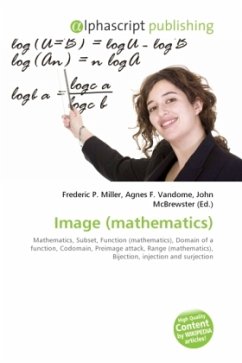
Babylonian Mathematics
Versandkostenfrei!
Versandfertig in 6-10 Tagen
36,99 €
inkl. MwSt.

PAYBACK Punkte
18 °P sammeln!
Babylonian mathematics (also known as Assyro-Babylonian mathematics refers to any mathematics of the peoples of Mesopotamia, from the days of the early Sumerians to the fall of Babylon in 539 BC. Babylonian mathematical texts are plentiful and well edited. In respect of time they fall in two distinct groups: one from the Old Babylonian period (1830-1531 BC), the other mainly Seleucid from the last three or four centuries B.C. In respect of content there is scarcely any difference between the two groups of texts. Thus Babylonian mathematics remained constant, in character and content, for nearl...
Babylonian mathematics (also known as Assyro-Babylonian mathematics refers to any mathematics of the peoples of Mesopotamia, from the days of the early Sumerians to the fall of Babylon in 539 BC. Babylonian mathematical texts are plentiful and well edited. In respect of time they fall in two distinct groups: one from the Old Babylonian period (1830-1531 BC), the other mainly Seleucid from the last three or four centuries B.C. In respect of content there is scarcely any difference between the two groups of texts. Thus Babylonian mathematics remained constant, in character and content, for nearly two millennia. In contrast to the scarcity of sources in Egyptian mathematics, our knowledge of Babylonian mathematics is derived from some 400 clay tablets unearthed since the 1850s. Written in Cuneiform script, tablets were inscribed while the clay was moist, and baked hard in an oven or by the heat of the sun. The majority of recovered clay tablets date from 1800 to 1600 BC, and cover topics which include fractions, algebra, quadratic and cubic equations and the Pythagorean theorem. The Babylonian tablet YBC 7289 gives an approximation to sqrt accurate to five decimal places.












